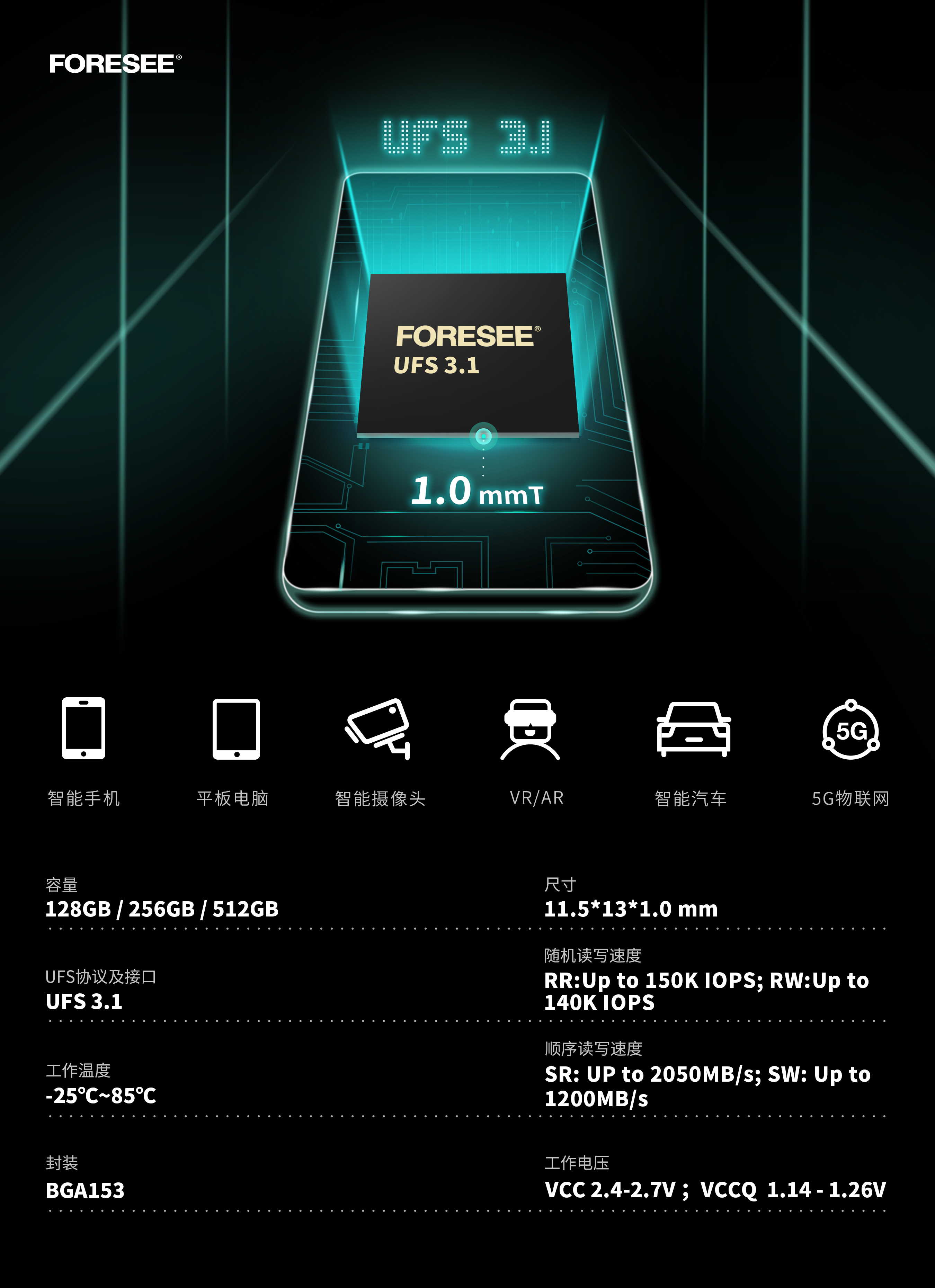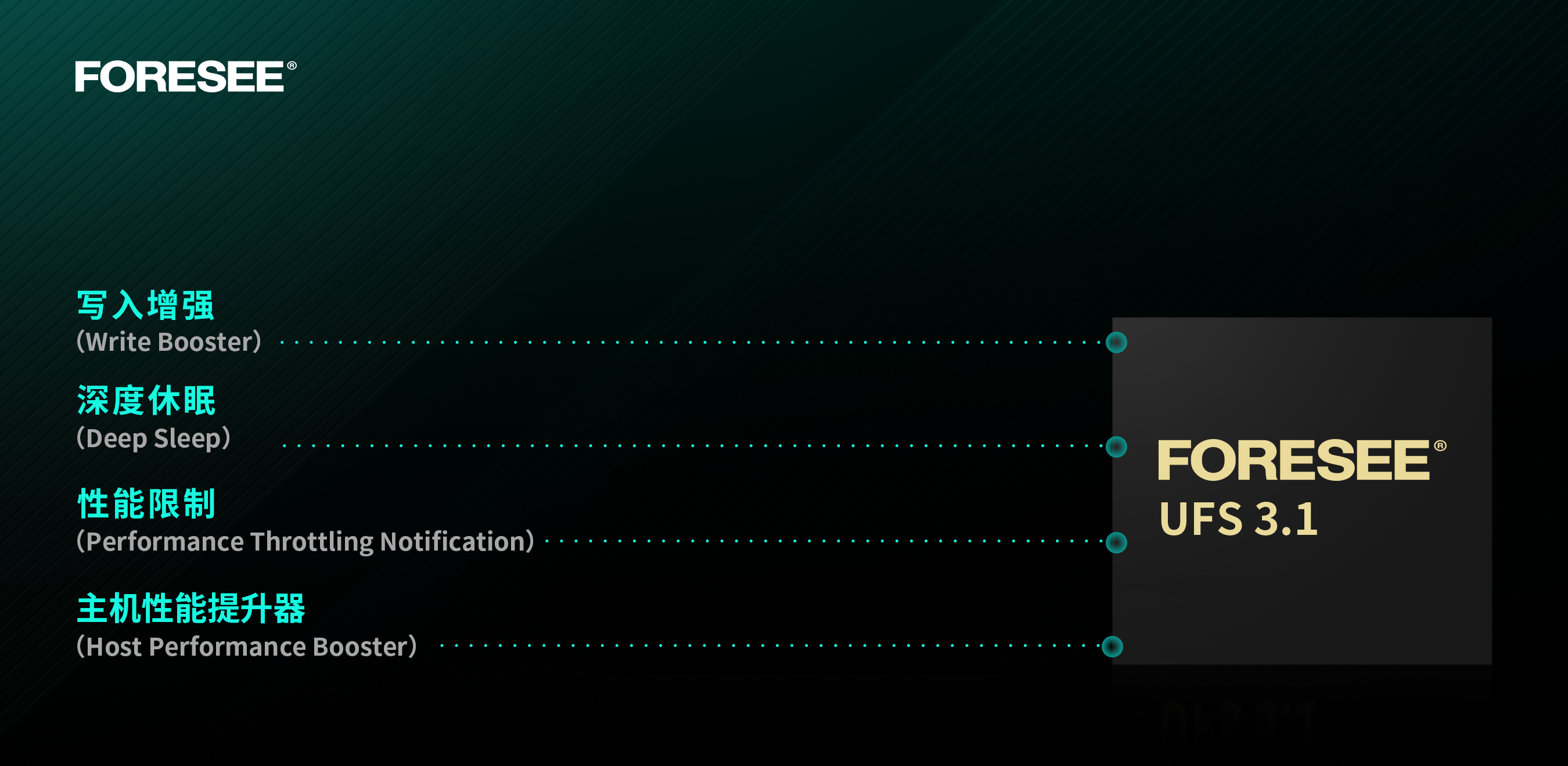Jambulon FORESEE Launches Next-Generation UFS 3.1 Flagship High-Speed Flash Memory, Making a Leap in Mobile Performance
The advent of the 5G era has driven continuous progress in storage products, and mobile terminal storage is no exception. Take cell phone storage as an example, from the early external SD card iterations to embedded eMMC, and then developed into a higher performance UFS, cell phone flash memory changes, derived from a wealth of intelligent applications, while speeding up the data writing and reading speed, to enhance the user experience of cell phones.

Today, SD cards are gradually fading out of the cell phone storage arena, and embedded storage has become the “main force” of mobile terminal storage. In recent years, cell phone communication has transitioned from 4G to 5G era, eMMC 5.1 has been unable to fully meet the massive data throughput requirements, and the performance is difficult to match the latest cell phone applications, which also allows many smart mobile terminals to start using UFS as the flash memory chip.
Since JEDEC released the new UFS 3.1 standard in 2020, the Jambolon embedded storage team has been heavily involved in R&D testing. After 2 years, Jambulon successfully launched FORESEE UFS 3.1 protocol version, which is currently in sample testing and verification stage.
Better Mobile Performance Makes Transfer Easy

UFS 3.1, the new generation flagship product of FORESEE embedded storage, is significantly optimized for performance and transfer latency, with write speeds of up to 1200MB/s, nearly three times faster than the previous generation of general-purpose flash storage, dramatically improving the efficiency of mobile terminals. In addition, UFS 3.1 can meet the functional requirements of instant boot, fast boot, and multitasking, shorten the application loading waiting time, and speed up and reduce the load for 5G mobile devices.

The road to 5G connectivity is unobstructed
FORESEE UFS 3.1 is currently available in 128GB, 256GB and 512GB capacity options to meet mainstream market demand. The product thickness is designed to be compressed to a maximum of 1.0mm for flexible compatibility with the internal space of mobile terminals. The product is widely used in flagship smartphone models, tablets, AR/VR, high-speed smart cameras, smart cars and 5G IoT devices.

Multi-function added to bring a new experience
According to the standard released by JEDEC, Jambulon, with a strong team of engineers, has independently developed firmware functions in UFS 3.1 such as write enhancement, low-power management, intelligent temperature control, and host performance enhancer to ensure that the flash memory chip plays to its performance advantage while still allowing the mobile terminal to maintain low-power constant temperature operation in order to achieve the golden ratio of performance to power consumption and improve the battery life of the mobile terminal Write Booster
- Write Booster
The Write Booster feature significantly improves the burst write performance of FORESEE UFS 3.1 application terminals. The principle is that the UFS 3.1 flash memory has an internal cache that receives files at a higher speed while it is working, and can continue until the flash memory writes are reduced and then the written files are transferred from the cache to the normal flash memory. - Low Power Management
FORESEE UFS 3.1 flash memory has excellent low power management, enabling the terminal device to quickly enter and exit low power mode, ensuring that the device operates at low power consumption without affecting the user experience.
- Intelligent temperature control (Thermal Throttling)
When the internal temperature of the mobile terminal is too high, the application terminal with FORESEE UFS 3.1 flash memory will initiate the temperature control function to avoid abnormalities or user data loss due to high temperature. It also notifies the system to limit the read/write performance when the device overheats, thus reducing the flash memory temperature.
- Host Performance Booster (HPB)
The HPB feature can be used to boost the read performance of FORESEE UFS3.1 application terminals. The principle is to use the phone RAM to relieve the hardware pressure on the flash memory and improve the read performance of the device.

Related posts:
- RK3588 development board RK3588 EVB and RK3588S EVB interpretation of Rexchip Micro
- Infineon launches NAC1080, a single-chip solution with integrated half-bridge driver IC for NFC passive lock and other applications
- What’s points should be note to Embedded hardware design ?
- The trends of power device module packaging structure
